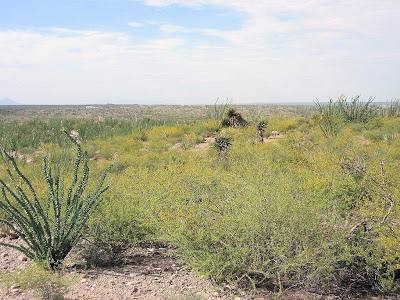
What's in a name, right? On the trail with Research Associate Becca this morning, we came upon some spectacular species of plants and animals. So far there are two that we can't identify--or, more correctly, I can't identify. Becca doesn't trouble herself with such trivialities. The first photo is of a lizard that looks like it could have descended from a spaceship near Roswell. I'd say it's an immature collared lizard, but where's the collar?

This second pic is of two unripe pears from the prickly pear cactus.

Photo #3 is of an unidentified plant that I thought, at first, was a feather dalea; but the leaves and feathers are different. It might be a type of dalea, but I'll have to consult a specialist on this one.

* (See note below)
Two stout barrel cacti,

one about to blossom.
__________________
* Wynn Anderson, The Botanical Curator at the Chihuahuan Desert Gardens of the Centennial Museum at UTEP, informs me that the beautiful specimen in Photo #3 is Plume Coldenia (Tiquilla greggii), a member of the Borage family.





















































